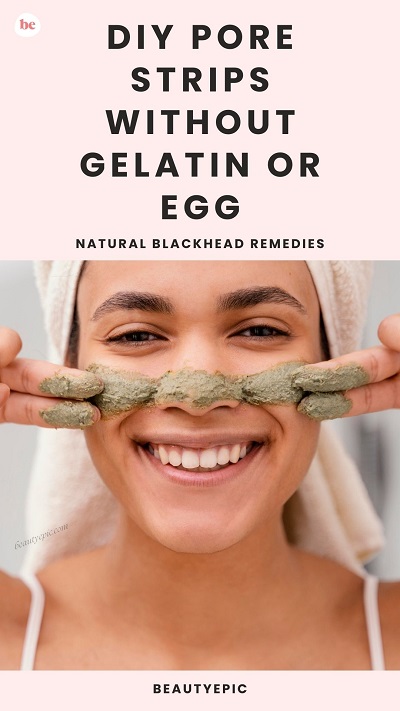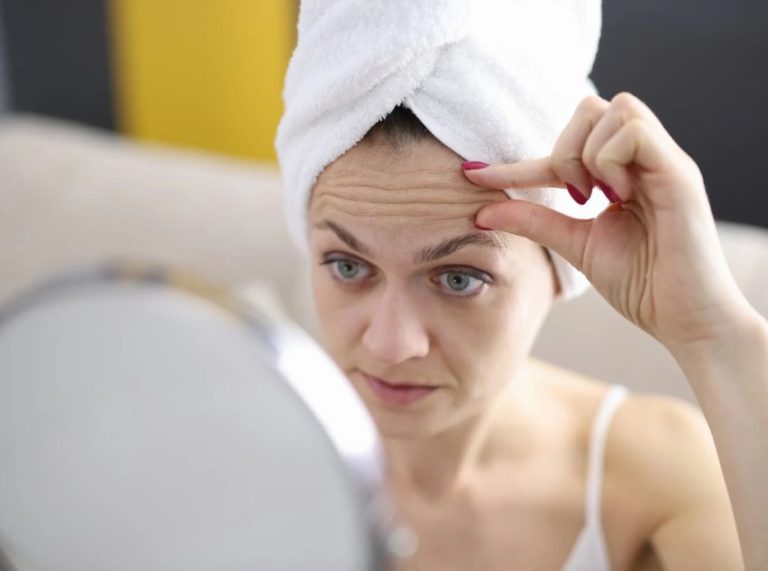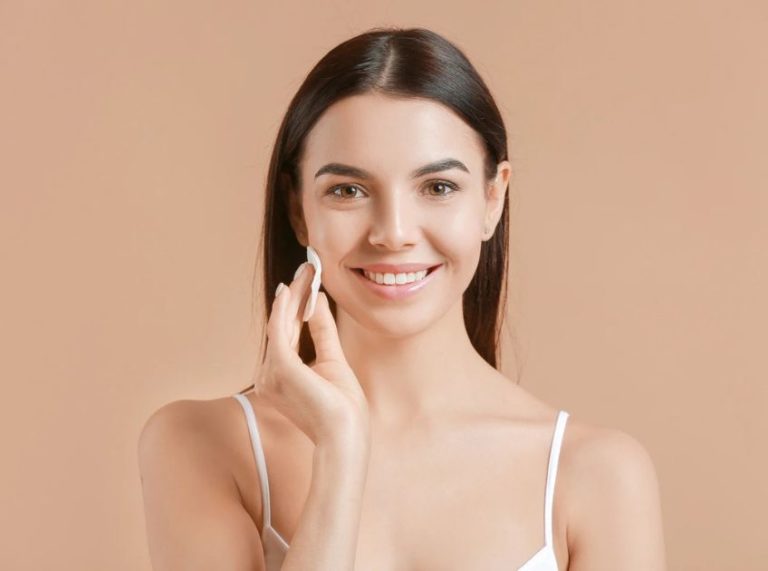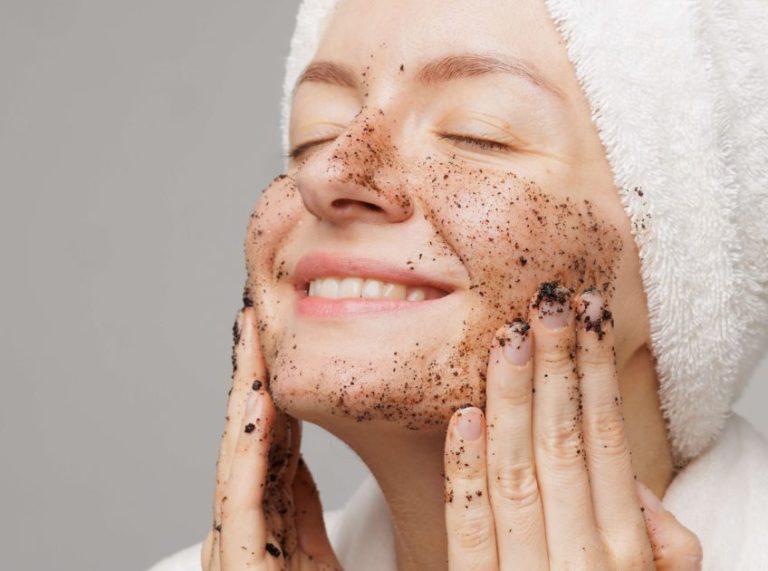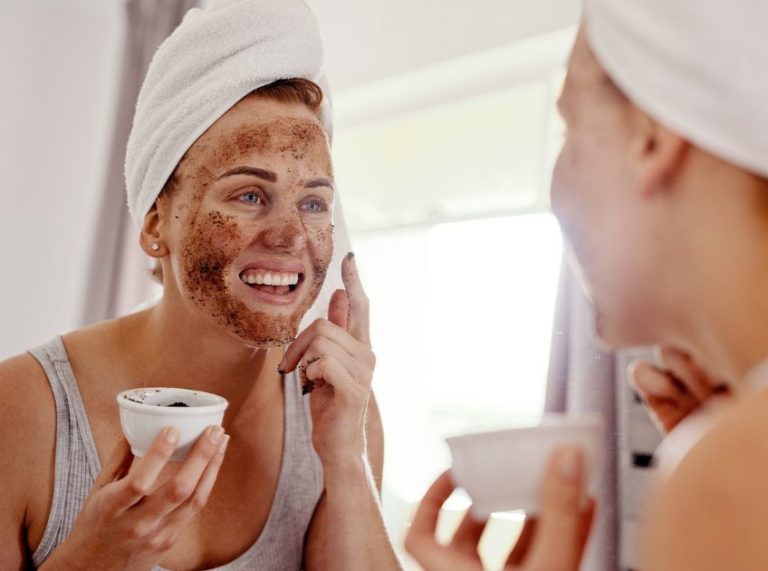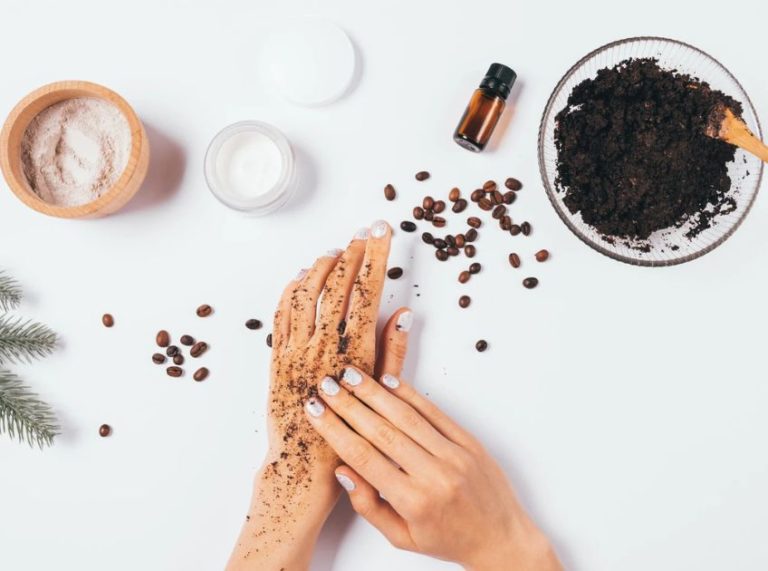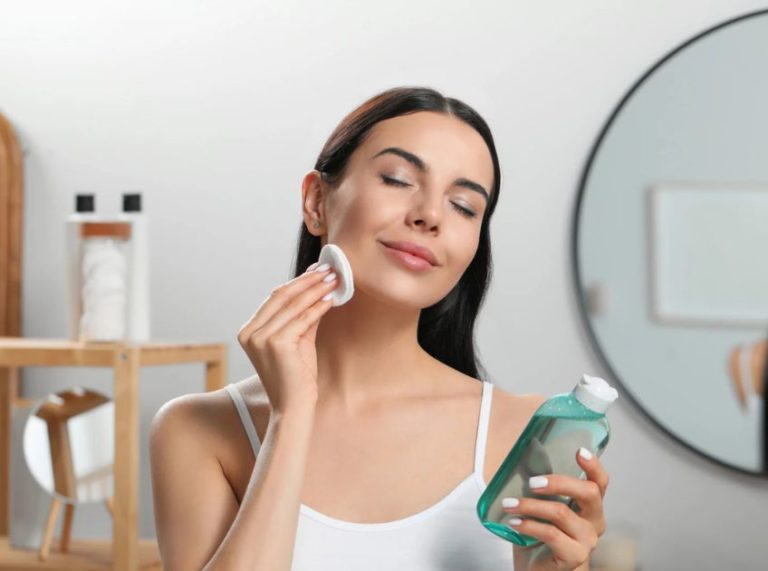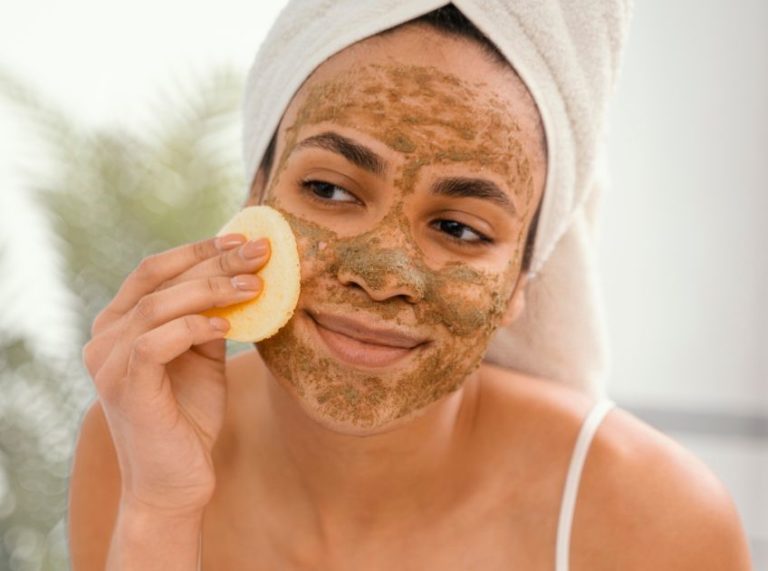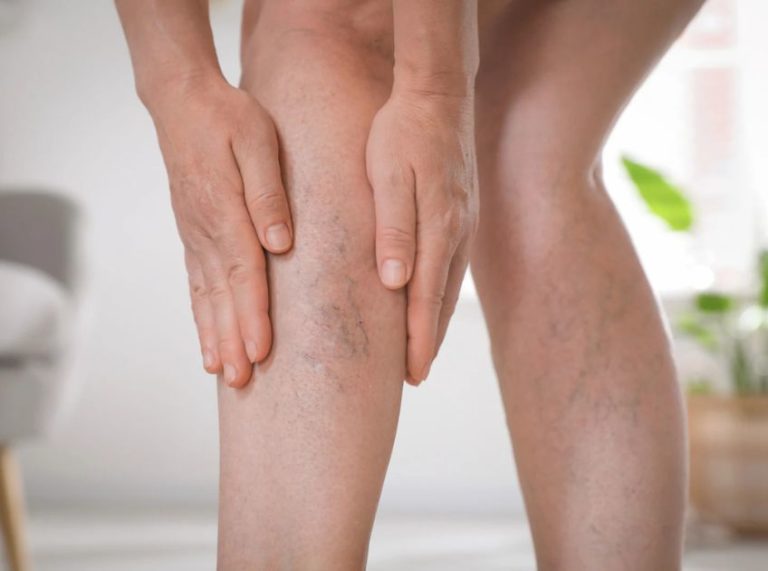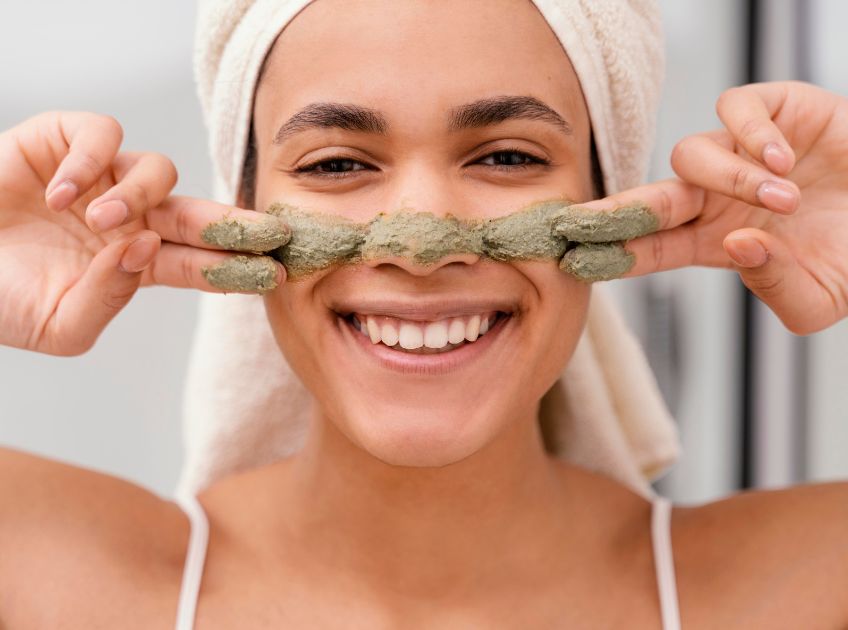
Important: This article is for informational purposes only. Please read our full disclaimer for more details.
Blackheads are one of the most common skin concerns, especially around the nose, chin, and T-zone. They form when pores get clogged with excess sebum, dirt, and dead skin cells, eventually oxidizing and turning dark.
Many DIY pore strip recipes use gelatin or egg whites to create peel-off masks. While effective, these ingredients don’t work for everyone—some people dislike the smell, are allergic, or prefer vegan-friendly alternatives.
The good news? You can make DIY pore strips without gelatin or egg using safe, natural ingredients that unclog pores without irritating your skin. Backed by dermatological insights, here are three gentle, effective recipes you can try at home.
3 DIY Pore Strips Without Gelatin or Egg
1. Honey & Cotton Strip Pore Mask (Gentle & Antibacterial)
Honey is a natural humectant and has antimicrobial properties that can reduce acne-causing bacteria and help loosen pore blockages.
Ingredients
- 1 tablespoon raw honey
- Cotton strips or thin tissues
How to Use
- Warm the honey slightly until it becomes runny.
- Apply a thin layer over your nose or affected areas.
- Press a cotton strip gently onto the honey-coated area.
- Leave it on for 10–15 minutes until slightly firm.
- Peel off gently and rinse with lukewarm water.
Why It Works
A 2020 study in the Journal of Clinical and Aesthetic Dermatology highlights honey’s ability to inhibit bacterial growth and improve skin healing, making it ideal for acne-prone and sensitive skin (1).
2. Rice Flour & Milk Pore Strips (Exfoliating & Brightening)
Rice flour acts as a natural exfoliant, while milk contains lactic acid that helps loosen clogged pores and brighten skin tone.
Ingredients
- 2 tablespoons rice flour
- 1–2 tablespoons milk
How to Use
- Mix rice flour and milk into a smooth paste.
- Apply evenly over your nose and blackhead-prone areas.
- Allow it to dry completely (15–20 minutes).
- Gently peel or wash it off.
Why It Works
According to a 2018 review in the International Journal of Cosmetic Science, lactic acid in milk promotes gentle exfoliation while improving overall skin texture, making this recipe a safe yet effective alternative to harsh pore strips (2).
3. Aloe Vera & Charcoal Peel-Off Strips (Detoxifying & Soothing)
Activated charcoal is known for its adsorption properties, which help pull out dirt and excess oil from deep within pores. Aloe vera adds a soothing, hydrating effect to prevent irritation.
Ingredients
- 1 tablespoon activated charcoal powder
- 2 tablespoons aloe vera gel
- Cotton strips or a soft brush
How to Use
- Mix charcoal powder and aloe vera gel until you get a thick paste.
- Apply a thin layer over your nose or T-zone.
- Place cotton strips on top and gently press.
- Let it dry for 15–20 minutes.
- Peel off carefully and rinse with cool water.
Why It Works
A 2019 study published in the Journal of Environmental Chemical Engineering confirms activated charcoal’s ability to bind impurities and toxins, making it an effective natural detoxifier for clogged pores (3).
Frequently Asked Questions (FAQ’S)
1. Are DIY pore strips safe for sensitive skin?
A. Yes—if you use gentle ingredients like honey or aloe vera and avoid harsh chemicals. Always do a patch test first to check for irritation.
2. How often can I use these DIY pore strips?
A. Limit usage to once a week. Overusing peel-off masks can weaken your skin barrier and increase dryness or irritation.
3. Do DIY pore strips shrink pores permanently?
A. No. Pore strips only remove surface debris; they don’t reduce pore size permanently. For long-term results, combine DIY treatments with salicylic acid cleansers or retinoids as recommended by dermatologists.
DIY pore strips without gelatin or egg offer a safer, customizable way to remove blackheads and unclog pores. Whether you choose honey, rice flour, or charcoal-based recipes, these natural alternatives are skin-friendly and effective when used in moderation.
